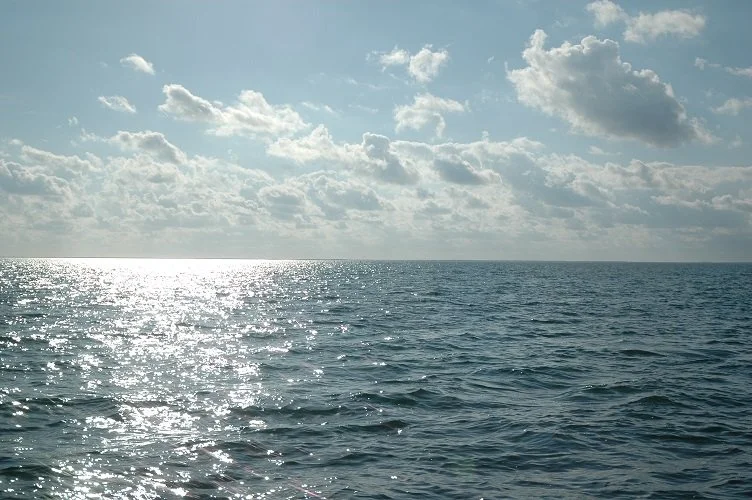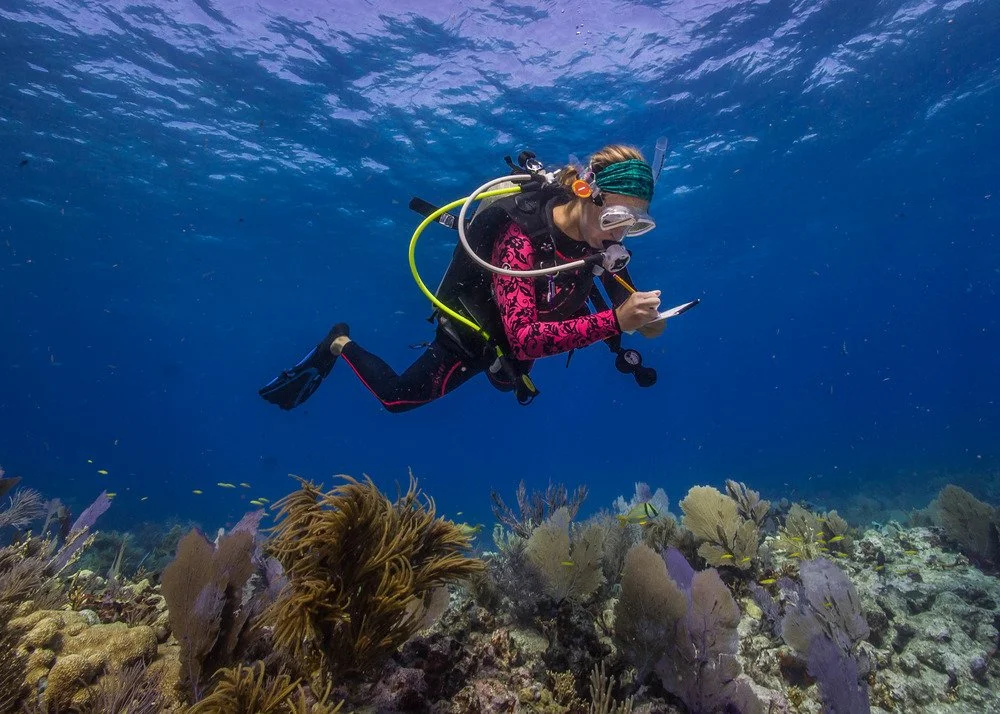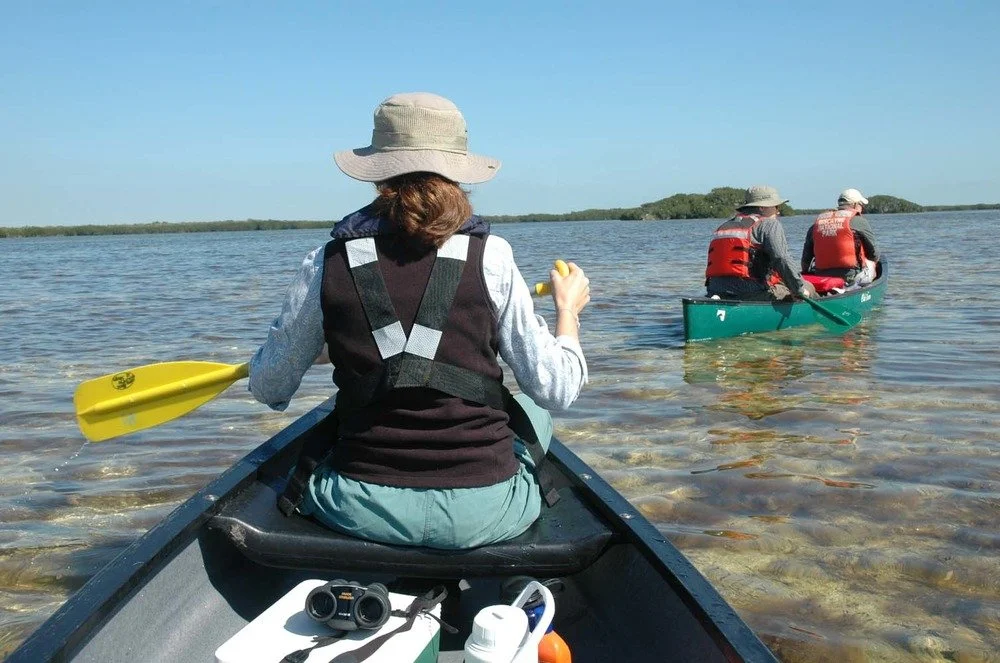Biscayne National Park (Florida)
Nestled along the sun-drenched shores of southeastern Florida, Biscayne National Park is a radiant gem that showcases the extraordinary beauty and diversity of the region's aquatic ecosystems. This vast marine sanctuary, encompassing over 170,000 acres of submerged wonderland, invites visitors to delve into an enchanting world where vibrant coral reefs, lush mangrove forests, and tranquil seagrass meadows create a haven for an array of flora and fauna. Established as a national park in 1980, Biscayne is a tribute to the enduring splendor and resilience of America's aquatic treasures.
Biscayne National Park is defined by its remarkable underwater landscapes, which harbor an unparalleled array of marine life. The park's living coral reefs, teeming with brilliantly colored fish and invertebrates, are among the most diverse and vibrant ecosystems in the world. These delicate underwater gardens are contrasted by the serene beauty of the park's seagrass beds and the tangled roots of its mangrove forests, which serve as vital nurseries for countless marine species.
In addition to its natural wonders, Biscayne National Park boasts a rich cultural history that spans over 10,000 years. From the ancient Tequesta people and Spanish explorers to shipwrecked sailors and modern-day adventurers, the park's pristine waters have borne witness to countless stories of human perseverance and ingenuity. The remnants of shipwrecks scattered throughout the park's waters provide a fascinating glimpse into the past and offer a unique experience for snorkelers and divers.
Visitors to Biscayne National Park can enjoy a variety of recreational activities that showcase the park's extraordinary marine environments. Snorkeling and diving excursions provide an unparalleled opportunity to explore the park's vibrant coral reefs and intriguing shipwrecks up close, while kayaking and canoeing offer a serene means of navigating the park's tranquil mangrove channels. For those seeking a more leisurely experience, scenic boat tours and wildlife viewing cruises offer a chance to appreciate the park's beauty from the comfort of a vessel.
The gateway to Biscayne National Park is the bustling city of Miami, which provides visitors with a wealth of amenities and attractions. From luxurious hotels and world-class dining to vibrant cultural experiences, Miami offers the perfect complement to the park's pristine natural beauty.
MUST SEE SITES
Snorkeling or Scuba Diving: Biscayne National Park is home to some of the most diverse and beautiful coral reefs in the world. Visitors can snorkel or scuba dive to explore the underwater world and see a variety of marine life, including colorful fish, sea turtles, and even sharks. There are several snorkeling and diving tours available, as well as equipment rentals and lessons.
Boca Chita Key: This scenic island features a historic lighthouse, picnic areas, and stunning views of the surrounding water and islands. Visitors can take a ferry or private boat to the island and explore the historic structures, hike the nature trail, or simply relax on the beach.
Elliott Key: This island is the largest in the park and offers a range of activities, including hiking, swimming, and fishing. Visitors can take a ferry or private boat to the island and explore the nature trails, visit the historic buildings, or relax on the beach.
Mangrove Forests: Biscayne National Park is home to several large mangrove forests, which are important habitats for a variety of marine species. Visitors can explore the mangrove forests by kayak or canoe and see a variety of wildlife, including manatees, dolphins, and sea turtles.
Convoy Point: This scenic area features a visitor center, picnic areas, and stunning views of Biscayne Bay. Visitors can learn about the park's history and ecology, explore the nearby trails, or simply relax and take in the views.
GETTING THERE
The most popular ways to arrive at Biscayne National Park are by car and boat. If you're driving, the park is located in southern Florida and can be accessed via several routes. From Miami, you can take the Florida Turnpike south to the end and then follow State Road 9336 to the park entrance.
The park is primarily water-based, so many visitors arrive by boat. The park has two marinas: the Dante Fascell Visitor Center and the Convoy Point Visitor Center. Both marinas offer boat rentals and tours, and there are several private companies that offer tours and charters as well.
The closest airport to Biscayne National Park is the Miami International Airport, which is about 30 minutes away by car. The airport offers flights from several cities, including New York, Los Angeles, and London.
Once you arrive at Biscayne National Park, the best way to explore is by boat. The park's waters are home to a diverse array of marine life, including dolphins, manatees, and sea turtles, and there are several coral reefs to explore. The park also has hiking trails on Elliott Key and Boca Chita Key, which can be accessed by boat.
GATEWAY COMMUNITIES
The city of Miami serves as the primary gateway, offering various accommodations, dining options, souvenir shops, and outdoor recreation equipment rentals. Other nearby communities, such as Homestead and Key Largo, also provide lodging and amenities.
ACCOMMODATIONS
Visitors to Biscayne can find various lodging options in the area, including hotels, motels, and vacation rentals. While there are no campgrounds within the park itself, nearby Everglades National Park and the Florida Keys offer several camping options for those interested in an outdoor experience.
CAMPGROUNDS
Although Biscayne National Park doesn't have campgrounds on the mainland, visitors can camp on two of the park's islands: Elliott Key and Boca Chita Key. Both islands are accessible by boat and offer primitive camping with limited facilities, such as picnic tables, grills, and restrooms.
WEATHER/CLIMATE
The area has a tropical climate, with hot, humid summers and mild winters. Average summer temperatures can reach the upper 80s to low 90s Fahrenheit, while winter temperatures range from the 60s to 70s. Visitors should be prepared for potential thunderstorms, especially during the summer months.
RECREATION OPPORTUNITIES
Numerous recreational opportunities await visitors , including boating, snorkeling, scuba diving, wildlife viewing, and fishing. The park's coral reefs and crystal-clear waters provide stunning underwater vistas for snorkelers and divers. Wildlife viewing is also popular, with manatees, sea turtles, and a variety of bird species inhabiting the area.
VISITOR CENTER
The Dante Fascell Visitor Center, located at Convoy Point provide information about the park's history, ecology, wildlife, and recreational opportunities. Rangers are available to offer guidance and answer questions. The visitor center is open daily, year-round, except for major holidays.
THINGS TO KNOW
Entrance Fee: There is no entrance fee for Biscayne National Park.
Pet Policy: Pets are allowed in developed areas, on boats, and at the Elliott Key campground, but must be leashed and under control at all times. Pets are not allowed on Boca Chita Key, in park buildings, or on the hiking trails of Elliott Key.
Hours of operation: Biscayne National Park is open 24 hours a day, 7 days a week. The Dante Fascell Visitor Center has specific operating hours, which can be found on the park's website.
Website: https://www.nps.gov/bisc/index.htm
Contact phone number: (305) 230-1144
Address: Biscayne National Park, 9700 SW 328th St, Homestead, FL 33033, United States





